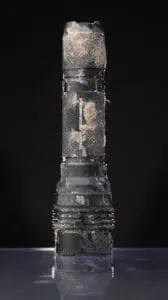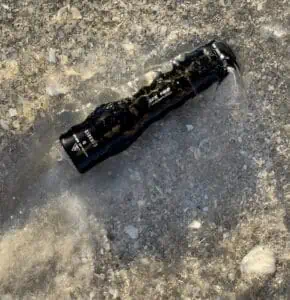What Does Your Gear’s IP Rating Really Mean?
An IP rating (also known as an IP code or ingress protection code) specifies the amount of protection a mechanical casing or electrical enclosure provides against intrusion from solid particles and liquid. Unlike generic terms such as “dust resistant” and “waterproof,” an IP rating specifies exactly how well a piece of equipment can endure in a dusty or wet environment.
How to Read IP Ratings
Reading an IP rating is easy. Every rating begins with the letters “IP. That is then followed by two numbers: the first reflecting solid particle protection, the second reflecting liquid ingress protection. In brief: IP(dust resistance)(water resistance)
 IP Rating Charts
IP Rating Charts
Digit One: Solid Particle Protection
The first digit of a rating is the more straightforward one: The higher the number, the better the device is protected against foreign objects entering the light.
IP Rating Chart for Solid Particles
| Number | Effective Against | Examples |
|---|---|---|
| X | X means there is no data available | Varies widely as no data is available |
| 0 | Basically nothing | No protection provided |
| 1 | 2" | Hands, flat surfaces (i.e. not very much) |
| 2 | 0.49" | Fingers, toes |
| 3 | 0.098" | Screwdrivers, 10 gauge and wider wires |
| 4 | 0.039" | Small screws, most visible insects, 18 gauge and wider wires |
| 5 | Very Small | Dust particles (although not completely "dust-tight") |
| 6 | Smaller than Dust | Dust particles (completely "dust-tight" for a duration of at least eight hours) |
IP Water Proof Rating
Digit Two: Liquid Ingress Protection
The second digit of the rating is a little more complicated. These numbers are not cumulative beyond 6. For example, that means a tactical flashlight which can survive being submerged in water is not necessarily immune to water jets. A properly rated flashlight for submergence and water jets would be IPX6/IPX7.
IP Rating Table for Water Protection
| Rating Number | Effective Against | Example |
|---|---|---|
| X | (Not rated by manufacturer) | No data provided/available |
| 0 | Virtually nothing | No protection against water (keep it dry or lose it) |
| 1 | Dripping water | One minute of very light rain (specifically 0.039" of rain per minute) |
| 2 | Dripping water tilted at 15° | One minute of light rain (0.12" of rain per minute) |
| 3 | Spraying water | Spray nozzle or sprinkler |
| 4 | Splashing water | Garden hose |
| 5 | Water jet | Garden nozzle |
| 6 | Powerful water jet | Car wash nozzle |
| 6K | Powerful, high-pressure water jet | Pressure washer nozzle |
| 7 | Immersion up to 3.25' deep | Up to 30 minutes in a bathtub |
| 8 | Immersion up to ~9.80' deep | Swimming pool (duration depends on manufacturer) |
| 9K | Powerful, high-temperature water jets | Industrial cleaning nozzle |
 For a more complete overview of IP ratings, please visit the International Electrotechnical Commission’s website.
For a more complete overview of IP ratings, please visit the International Electrotechnical Commission’s website.
How High Of An IP Rating Do You Need?
How tough your gear needs to be depends a lot on what you expect to do with it and what your budget is. For the most part, the average armed citizen doesn’t have to deal with the extremes of weather and other environmental factors that law enforcement officers and the military needs to deal with. Therefore, we do just fine with something in the IP6 or 7 range. However, if you live in area where extreme weather is more commonplace, like the dust storms in Arizona or hurricane season in the Southeast, you might want to consider something that’s built to handle that sort of abuse.
Putting It All Together
Once you understand how these ratings work, it becomes easy to see just how resistant a piece of equipment is to a harsh environment. A flashlight with a rating of IP68 is designed to survive a sandstorm. We’re thinking an subsequent hour or two at the bottom of a river! Meanwhile, manufacturers design flashlights with a rating of, say, IP41 as one you might carry in a purse.
Don’t get stuck trying to use a piece of equipment in an environment its not designed for! Check that IP rating and rest assured you’re ready for the task at hand.


